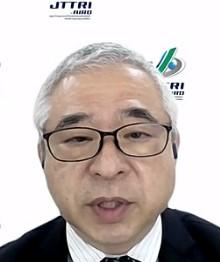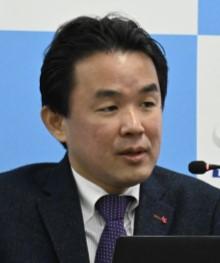Analysis of Airline Strategies in ASEAN
The 154th Transport Policy Colloquium ASEAN-India Regional Report
- Colloquium
- Aviation and Airport
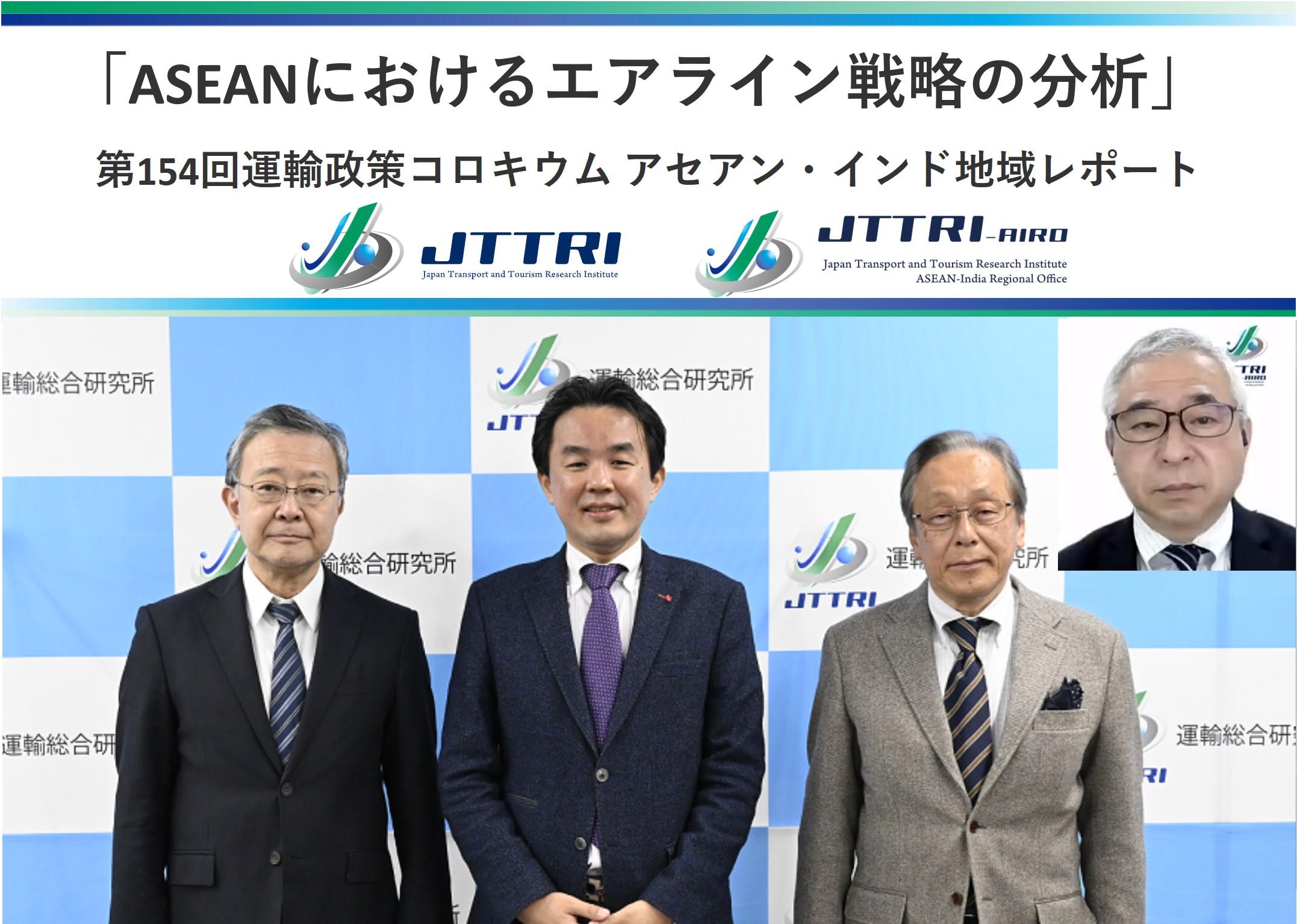

| Date / Time | Tue, Mar 14,2023 13:00~15:00(JST) |
|---|---|
| Venue | Japan Transport and Tourism Research Institute 2F (Zoom Online Webinar is also available) |
Event Summary
Program of the seminar is as the following
| Opening Remarks |
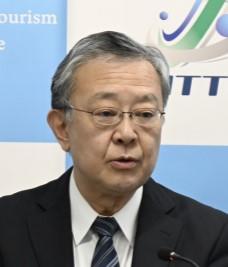
OKUDA Tetsuya |
|---|---|
| Lecture | |
| Coordinator |
〔Coordinator〕
YAMAUCHI Hirotaka President for Research, Japan Transport and Tourism Research Institute (JTTRI) 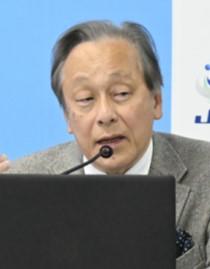
|
Outline of the seminar
With member states of the Association of Southeast Asian Nations (ASEAN) enjoying remarkable economic growth and increasingly strengthening their economic relations with Japan, the ASEAN aviation market is a subject that Japan’s aviation industry insiders should closely follow. This market has been affected by the strategies of AirAsia and other low-cost carriers (LCCs) ever since such operators made their foray in the early 2000s.The Colloquium accordingly presents the recent state of recovery in ASEAN’s aviation demand through comparison with Japan, and explores the strategies of airlines while noting how ASEAN LCC service offerings have shifted over time through the competition with full-service carriers (FSCs). Building on this exploration, the Colloquium also offers pointers as to the future efforts that ASEAN and Japan’s aviation markets should make in light of the pandemic.
■Results of the Event
I. Overview of the Presentation
(1) Transition of major ASEAN airlines and their strategies (pre-pandemic)
ASEAN, which had adopted an “open skies” regime and achieved a deregulated environment—albeit an incomplete one—by around 2000, saw the advent of LCCs in the early 2000s. The situation at the time, unlike that surrounding the “third package” of aviation measures in Europe, involved holding affiliated companies in other countries to obtain the seventh freedom of the air and establishing an LCC-dedicated terminal at Kuala Lumpur International Airport in lieu of a secondary airport. An LCC-dedicated terminal was also established at Changi Airport at around the same time but was subsequently closed, and such types of terminals have not been widely spreading thereafter in ASEAN. As for the use of secondary airports, Don Mueang Airport is currently functioning as an LCC-dedicated airport, but this is only an outcome based on inadequacies at Suvarnabhumi Airport.
The transition of ASEAN’s airlines shows that in response to LCCs emerging in the early 2000s, FSCs have adopted strategies from early days to integrate LCCs into their groups, and as of 2022, many flag carriers have integrated LCCs. Incidentally, as opposed to the development in ASEAN, Japan trailed behind the region by roughly a decade: 2012 is said to be the first year in which LCCs started operating in the country.
The primary strategies that FSC and LCC group companies adopted amid pre-pandemic transitions in ASEAN’s airlines reveal the following commonalities in recent years: (1) streamlining and restructuring group systems (including network strategy); (2) increasing ancillary revenues; and (3) expanding into new businesses, including non-aviation collaborative businesses.
For some FSCs, item 1 concerns pursuits to break out of the red, whereas for profitable FSCs and LCCs, this concerns striving for efficient portfolio strategies. However, considering the state of FSCs’ efforts to acquire and subsequently integrate LCCs, FSCs appear to be struggling with their handling of LCCs. Furthermore, how to deal with short/medium-haul routes and medium/long-haul routes is another contentious issue for LCCs.
Item 2 suggests that instead of relying solely on air passenger revenues, group companies are emphasizing securing earnings through increased ancillary revenues.
As an extension of this, operators have recently presented a strategy to expand into new businesses, including non-aviation collaborative ones, as described in item 3. This is particularly evident in LCCs. An interview with a certain LCC in ASEAN examined the reason for this move, and revealed that the long years of passenger transit allowed for the carrier to retain massive amounts of customer data, and that this made the company’s entry into non-aviation businesses a natural progression for utilizing the data. This strategy may come across as a measure against the pandemic-based decline in airline demand, but in actuality, it had not anticipated COVID-19 and had started gaining momentum from around 2018. There has been a business-based necessity for securing different income sources instead of relying only on air passenger revenues, and this has prompted the new trend of carriers making foray into non-aviation operations.
Incidentally, ASEAN’s LCCs account for more than 70% of Thailand’s domestic market and around half of the country’s international market. Considering how LCCs in Japan only have around a 10% market share, the ASEAN aviation market is far more advanced in terms of LCC use than Japan.
(2) State of post-pandemic recovery and the future direction of major ASEAN airlines
Post-pandemic recovery in the Asia-Pacific aviation market has been markedly slower than the rest of the world. This is largely due to the “zero COVID” policy in China, which boasts a massive aviation market in the Asia Pacific in terms of demand. With the policy relaxed in late 2022, the Asia-Pacific aviation market is likely to recover if Chinese aviation demand picks up.
Meanwhile, the passenger traffic data released by major airlines in ASEAN shows a strong recovery trend in domestic LCC passenger demand, though no such sign can be found for FSCs. Both LCCs and FSCs are not recovering smoothly in terms of international passenger demand, and the upturn is particularly sluggish for FSCs. Despite daily observations indicating a strong potential demand in ASEAN’s domestic and international aviation market, the performance of air services has not necessarily recovered, suggesting that supply—not demand—is the reason behind the slow recovery in ASEAN.
Among the many preparations required (e.g., airlines reopening routes), ASEAN’s aviation industry insiders say securing human resources is a particularly difficult challenge. Indeed, the workforce of major ASEAN airlines has dropped some 30% from pre-pandemic levels, which is one reason why airline supply is not picking up quickly. Some have also pointed out that international flight airfares have stayed high: data from an example in Malaysia shows that international airfares have surged and remained high from the second quarter of 2020. Consistently high airfares are thus another cause behind the slow recovery of ASEAN’s international market.
(3) Summary
In summary, the transitions in and the analyses of strategies adopted by ASEAN airlines suggest that (1) major ASEAN airlines—both FSCs and LCCs—are either restructuring their organization or considering doing so as part of their portfolio strategy; (2) there exists increasing trends to pursue a boost in ancillary revenue apart from air passenger revenue, as well as to enter into non-aviation businesses. Furthermore, analyses on the state of recovery from the pandemic and prospects for subsequent recovery imply that (3) the securing and supply of human resources are an issue as to bouncing back from the pandemic.
Regarding a point concerning relations with Japan, (4) Japan is experiencing trends delayed from but similar to those in ASEAN. The presenter thus infers that the share of LCCs could increase in Japan down the line, considering the state of LCCs in ASEAN. If this occurs, the key will likely be the Japanese society’s acceptance of online services and applications; an aspect that has already been increasingly embraced by passengers in ASEAN member states.
II. Overview of Professor Hanaoka’s comments
Building upon various datasets, the presentation summarizes the recent state of aviation and transitions in ASEAN’s airlines well. The information about the strategy of AirAsia is a particular stand-out in terms of originality. As the next step forward, I would recommend not only compiling data but also analyzing the effect of the strategies and the impact of policies, using such approaches as statistical methods. This could further brush up the study.
To add to the presentation, ASEAN’s LCCs are characterized by how they meet the needs of the middle-income population, the size of the region that allows for easily setting short-distance routes, AirAsia CEO Tony Fernandes’ outstanding management vision, and the coordination between regional associations and regional airline liberalization policies. The topic of coordination in ASEAN is closely related to the ASEAN Economic Community, and ASEAN LCCs have established LCC joint ventures outside their home countries because unlike Europe, restriction removals have only been achieved up to the fifth freedom of the air.
Professor Hanaoka also shared the results of an network centrality analysis on the ASEAN region, which he recently conducted as joint research with Assistant Professor Sugishita of the Tokyo Institute of Technology. Betweenness centrality can be interpreted to be indicating the advantage (and the potential thereof) of a hub airport in an aviation network, and, the results of the research showed that Bangkok has a relatively low value (possibility of not having too many overlapping routes) given it accommodating two airports in a single city (BKK and DMK), Soekarno-Hatta (CGK) and Manila (MNL) have an advantage as international and domestic network transit airports, and Changi (SIN) has a relative weakness in East Asian networks.
III. Overview of Discussion
Professor Hanaoka: I would like to hear more about why AirAsia decided to engage in new businesses.
Senior Research Fellow Yamashita: Our interview—conducted based on a somewhat haphazard hypothesis as to why AirAsia engages in new businesses—ultimately led to the carrier’s response that their move was a natural, business-based progression to utilize various datasets (e.g., customer information) obtained through airline operation. In 2008, AirAsia hedged against rising aircraft fuel price risks, but this move backfired as the cost of aircraft fuel subsequently fell sharply, causing the carrier to incur significant liabilities. Ancillary revenues helped to cover the liabilities at the time, which sparked an awareness from that point onward regarding the importance of ancillary revenues aside from air passenger revenues. As a natural extension, in recent years AirAsia forayed into new businesses that utilize accumulated data.
President Yamauchi: Relying only on air service revenues has been a long-standing issue for Japanese airlines, and the pandemic made the efforts you mentioned increasingly important.
On another note, Professor Hanaoka’s explanations made me think that the establishment of routes or multiple hubs can be comprehended in the context of portfolio strategies—similar to rolling out portfolio strategies through new business developments. What do you think of AirAsia and other airlines that operate in multiple countries?
Senior Research Fellow Yamashita: AirAsia and other airlines operate in multiple countries with a unified brand, and there is a significance in this. The carriers also are foraying into new businesses under a unified brand, and I think this unified brand strategy is greatly appealing.
Professor Hanaoka: Before hearing President Yamauchi’s comment, I did not think of route establishment efforts as a portfolio strategy, but now that you mention it, that interpretation makes sense. I said that a unified brand airline carries no connotation of any nationality. With its tagline “Now Everyone Can Fly” and a strategy that allows passengers to fly from anywhere, I would say AirAsia makes good use of its unified brand amid there being various limitations.
President Yamauchi: Around two decades ago, talks were underway about a collaborative aviation entity involving Japan, China, and South Korea. This is unlikely to materialize though, given the current political climate. But Europe has a unified market and the same is true for ASEAN in Southeast Asia. What action should Japan take as a country located in East Asia?
Professor Hanaoka: The aviation market has strong relations with economic integration. Japan, geographically speaking, only has the ocean in its neighboring eastern and southern areas, making it impossible to establish routes. So there likely is a need to consider the aviation market not in the context of East Asia but from the aspect of APEC or other large economic schemes.
IV. Overview of Key Questions and Answers
Q: LCCs are considered ineffective in medium/long-haul routes. How, then, should we view the relationship between the short/medium-haul AirAsia and the medium/long-haul AirAsia X?
Senior Research Fellow Yamashita: AirAsia and AirAsia X are sister companies. AirAsia—which offers short/medium-haul routes—already attracts passengers with its Bangkok and Kuala Lumpur hubs, and AirAsia X, which runs medium/long-haul operations, transports passengers to distant destinations. There is a significance in how a unified brand conducts these operations.
Professor Hanaoka: I completely agree with what Senior Research Fellow Yamashita said. I would say that AirAsia X will remain, as there exists a mindset to fully cater to the demand for medium/long-haul flights in Southeast Asia, where the economy is rapidly progressing.
President Yamauchi: A topic raised by fixed-point observations that our Washington Office is making on the U.S. aviation industry concerns the blurring line between FSCs and LCCs in recent years. Meanwhile, the pandemic has drastically reshaped the scene. Under such circumstances, LCC business models are likely to change as well, and I think we need to adopt this perspective when observing the development of airline businesses moving forward.
Q: Why didn’t LCC terminals gain a foothold in ASEAN?
Senior Research Fellow Yamashita: This was because while airport authorities were required to respond to the demand for increased airport throughput, they wanted to address this by establishing terminals that both FSCs and LCCs can use instead of separately developing unprofitable LCC-dedicated terminals with limited financial resources.
Q: What does the state of decarbonization efforts by ASEAN’s airlines look like?
Senior Research Fellow Yamashita: ASEAN’s airlines have presented their efforts for environmental issues in annual reports and other materials. On decarbonization, the airlines have stressed their introduction of efficient-combustion aircraft and SAF.
President Yamauchi: My guess is that ASEAN’s airlines have the potential of working on decarbonization from an advantageous standpoint. An example is their ability to procure carbon credits in the ASEAN region.
Q: Based on the centrality analysis, what is your take on the competition between Southeast Asian airports? Any plans to apply centrality analyses to East Asia?
Professor Hanaoka: Our network centrality analysis was on major Southeast Asian hub airports. The analysis can identify the traits of regional airports and is expandable, so I would say the advantage of transit airports can be dissected as well. We would very much like to apply the analysis to East Asia.
Q: Can centrality analysis dissect the purpose of travel and other traits of aviation passengers?
Professor Hanaoka: Centrality analyses interpret the traits of a network, so it is difficult to analyze passenger traits.
President Yamauchi: If we conduct the analysis after specifying the characteristics of an airport, we may be able to analyze passenger traits. I suggest considering this as an analytical approach for a new research paper.



